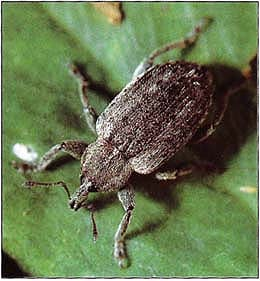Alfalfa weevil overwinters as an adult in field trash or other secluded hiding places and 
Larry Godfrey of UC Davis performed an insecticide efficacy trial against Egyptian alfalfa weevil (EAW) on the UC Davis Agronomy Farm. Egyptian alfalfa weevil larval populations were measured in each plot with a standard 15-inch diameter insect net consisting of twenty 180o sweeps. Beneficial insects were also counted in the same twenty 180o sweeps. All materials tested performed well against EAW larvae. Control with Lorsban 4E has been only moderate at this location for the last ~5 years, possibly due to resistance (although this has not been documented). The pyrethroid products and Steward have consistently given good EAW control. For the full article go here, http://ceriverside.ucanr.edu/newsletters/Postings_from_the_Palo_Verde_Valley42159.pdf